If you’re into the sewing world or considering upgrading your current machine, choosing the best rated home sewing machines can make all the difference.
With so many options available, deciding what’s best for your needs can get a little overwhelming, whether you’re a fashion enthusiast like me looking to do DIY sewing projects or a fashion designer who needs something versatile for more complex work.
Today, I will share how to choose the perfect sewing machine for you and give you a list of my best-rated home sewing machines. From essential features and key specifications to look out for, to understanding the different types of sewing machines before making a purchase.
Table of Contents
Top 3 Best Rated Home Sewing Machines
- Brother CS7000X Sewing and Quilting Machine
- SINGER Heavy Duty 4411 Sewing Machine
- Brother XM2701 Sewing Machine
How to Choose a Sewing Machine: Key Considerations
Selecting a sewing machine involves more than just picking a popular model or the one with the fanciest features. Your choice will depend on your sewing projects, experience level, and the features you want.
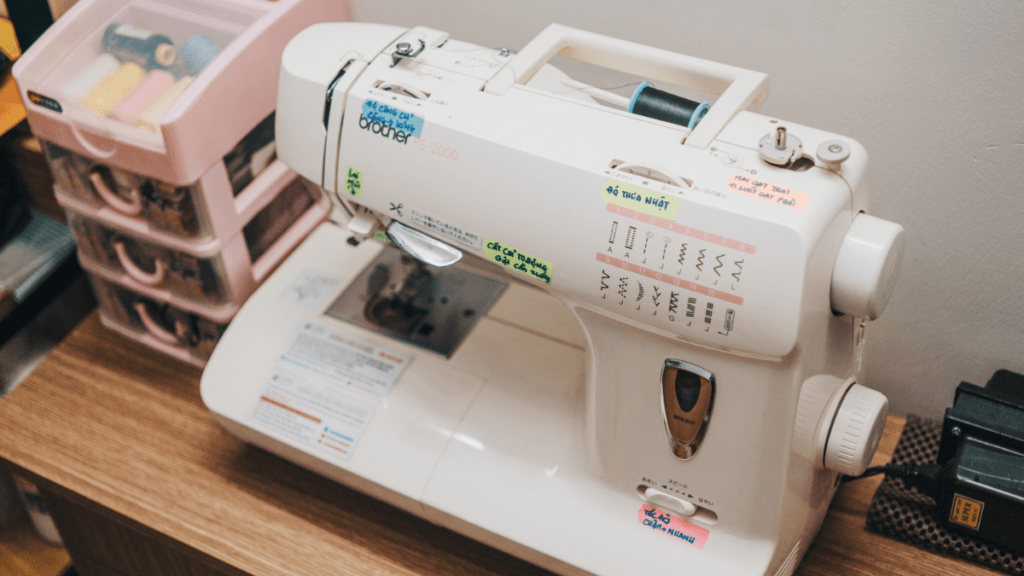
Check these factors to consider when evaluating the best sewing machine for your needs.
1. What Kind of Projects Will You Be Working On?
This is crucial because your machine’s features should match the complexity of the projects you plan to undertake.
- Basic Repairs and Alterations
A simple, mechanical sewing machine with basic stitch options will suffice.
- Clothing Design and Sewing
If you plan to sew garments, look for machines with stretch stitch settings and adjustable presser feet. These allow you to work with different fabrics.
- Quilting and Embroidery
For quilting, you need a machine that can handle thicker materials and has a large work area. Some computerized machines come with embroidery capabilities as well, providing more flexibility.
- Crafting and Home Décor Projects
A machine with multiple stitch options, including decorative stitches, will be helpful.
2. Type of Sewing Machine: Computerized, Mechanical, or Serger?
One of the first things to consider is the type of sewing machine. If you’ve already answered the question about what kind of projects you plan to do, then you’re ready to choose the machine type.
For basic items like pillowcases or hemming jeans, a mechanical machine may be all you need.
A computerized machine or even a serger might be worth the investment if you’re a fashion designer or crafter.
- Mechanical Sewing Machines
Great for beginners or anyone who prefers a more hands-on approach. These machines are usually more reliable and simple to operate. They offer just enough functionality for basic repairs and straightforward sewing projects.
They use knobs and dials for settings and are generally easier to repair because the parts are accessible. My mechanical machine is perfect for countless curtain hems and pillow covers or clothing.
- Computerized Sewing Machines
These machines come with advanced features, including an LCD screen, automatic stitch settings, and programmable stitch sequences. Ideal for more experienced people or anyone who likes to work on varied projects that require multiple stitch types. The ability to adjust settings with the touch of a button and store stitch patterns made things a lot more convenient, especially when working with tricky fabrics.
- Serger Sewing Machines
Ideal for professional-looking finishes, sergers stitch fabric edges together and trim the excess fabric at the same time, giving clean, store-bought finishes. While they aren’t a substitute for a regular sewing machine, they can be a great addition if you’re sewing a lot of garments or working with stretch fabrics. They are best suited for hemming, seam finishing, and decorative stitching, and the seams look crisp.
3. Setup: How Easy Is It to Get Started?
When you’re shopping for a sewing machine, consider how user-friendly it is to set up and operate. I found machines with clear, step-by-step instructions to be the most helpful.
Bobbin Setup
- Top-loading (Drop-in) Bobbins
They are generally easier to manage than front-loading ones. These bobbins are inserted from above and are usually housed under a transparent cover, allowing you to see how much thread is left. They’re generally easier to load and less prone to jamming.
- Front-Loading Bobbins
These are loaded into a compartment on the front of the machine. While they’re common on older models, they can be trickier for beginners to manage, as the bobbin is inserted sideways and isn’t as visible.
Manual vs. Automatic Settings
Consider whether you prefer manually adjusting tension and stitch length or using a machine that adjusts these settings for you automatically.
- Manual Adjustment
Some people prefer having manual control, as it allows for greater customization and fine-tuning, especially when working with different fabrics.
- Automatic Adjustment
Computerized machines usually offer automatic tension and stitch settings, which can be a big advantage for beginners or anyone who doesn’t want to spend time fiddling with the settings.
Clear Setup Instructions
When searching for a sewing machine, consider the quality of the manual and whether the machine includes online resources. Some brands also provide video tutorials, which can be a huge help, especially if you’re learning on your own.
I can’t count the number of times a detailed video saved me from struggling with confusing instructions. I recommend looking for machines that offer online resources or customer support.
4. Size and Weight
Think about where you will be sewing. If you love to attend sewing classes or workshops or you might need to transport your sewing machine frequently, you’ll need a lightweight and portable machine.
On the other hand, if you have a dedicated sewing space, you can go for a heavier, more stable, and longer machine that doesn’t need to be moved around.
- Lightweight Machines
These are easier to carry and store but may lack some heavy-duty features. If you have any physical conditions that affect lifting or carrying weight (such as back problems), opt for a lightweight model or choose a machine with wheels or a rolling case for easy transport.
While lightweight machines are great for portability, they can be less stable during sewing, especially when working with thick fabrics or multiple layers.
- Heavy Machines
Generally, heavier machines are more stable during use and may be more durable, but they can be challenging to move around. Heavier machines tend to stay put and resist vibrations, providing a smoother sewing experience. For projects like quilting, which often require precision, a heavier machine might be preferable.
- Workspace Light
Although not directly related to size and weight, a machine’s built-in lighting can affect how you use the machine in smaller spaces. Machines with good LED lighting are more suitable for areas with limited natural light as they allow you to see your stitches and fabric clearly.
- Extension Table Availability
Some sewing machines come with an extension table or offer it as an accessory. An extension table provides extra surface area for larger projects like quilts or long pieces of fabric. It can be a great addition if you work on big projects regularly. Having a larger work area can make handling fabric easier.
- Footprint When In Use vs. Storage Size
Some machines have parts like an extended arm or storage compartments that increase the space they occupy when in use. It’s good to know the machine’s footprint when it’s fully set up, as well as its storage size, especially if you plan to use it on a multi-purpose table.
5. Number and Types of Stitches
Different sewing machines come with varying numbers of built-in stitches, from basic to highly specialized. While it’s tempting to go for the sewing machine with hundreds of stitch options, remember that you might not need all of them.
Basic Sewing Needs
If you’re mainly sewing clothes, home décor, or doing simple repairs, you’ll likely be fine with 10–20 essential stitches (straight, zigzag, buttonhole, stretch stitches, and a few decorative options).
- Straight Stitch
The most common and versatile stitch is used for almost all sewing projects, from hemming pants to constructing garments.
- Zigzag Stitch
Used for finishing raw edges to prevent fraying, sewing stretch fabrics, and decorative stitching.
- Buttonhole Stitch
A must-have if you plan to sew garments with buttons. Machines may offer one-step or four-step buttonhole options, with the one-step being more convenient and beginner-friendly.
- Stretch Stitches
Also known as knit stitches, these are specifically designed for sewing stretchy fabrics like jersey, spandex, or lycra. They allow the fabric to stretch without popping stitches, making them essential if you sew a lot of sportswear, activewear, or casual clothing.
- Overlock (Mock Serger) Stitches
While not the same as a true serger, some sewing machines include overlock or mock serger stitches that can be used to finish fabric edges. These stitches can give your sewing projects a more polished, professional look.
- Decorative Stitches
These types of stitches add flair to your projects, perfect for embellishing clothes, home décor items, or quilts. Some machines can have up to 100 or more decorative stitches, but think about how often you’ll actually use them. In reality, we have a few favorites that we go back to, and others rarely we use.
Intermediate Sewing Needs
If you enjoy experimenting with different fabrics and techniques, look for a machine with 30–60 stitches. This range usually includes a mix of basic, decorative, stretch, and quilting stitches.
- Quilting Stitches
Quilting-specific stitches can make it easier to sew through multiple fabric layers. Some machines come with features like a “hand-look” quilting stitch that mimics hand-sewn quilting for a more traditional appearance.
- Blind Hem Stitch
Ideal for hemming trousers, skirts, and dresses where you don’t want the stitches to be visible from the outside. It creates a nearly invisible hem, perfect for professional-looking garments.
Advanced Sewing Needs
- Monogramming and Embroidery Stitches
Higher-end computerized machines may come with alphabet stitches or embroidery capabilities, allowing you to personalize items with monograms or simple designs.
A dedicated embroidery machine is recommended for serious embroidery work, but having some built-in monogramming stitches can be a fun bonus for small projects.
Remember that more stitches can mean a higher price tag, so it’s best to choose a machine with the stitches you’ll actually use rather than going for a higher number just for the sake of it.
Having a variety of stitch options is great, but focus on getting a machine that covers your most frequently used stitches, with a few extras for special projects.
6. Stitch Width and Length Adjustments
The ability to adjust stitch width and length adds versatility. For example:
- Stitch Width Adjustment
Useful for widening zigzag stitches or creating a custom look.
- Stitch Length Adjustment
Allows for longer stitches on straight seams or shorter stitches for dense areas like buttonholes.
7. Speed and Power
A machine’s speed and power are indicated by the number of stitches per minute (SPM) and the motor’s strength.
- Speed
Beginner-friendly machines typically operate at around 600-800 SPM, while more advanced models can go up to 1,500 SPM.
Choose a machine with variable speed control if you want to sew at different speeds, depending on the project. It is great for beginners who need to start slowly and gain confidence.
- Motor Power
For heavy-duty sewing, such as working with denim or multiple layers of fabric, you’ll need a machine with a stronger motor.
8. Design and Build Quality
The construction of the sewing machine affects its durability and longevity.
- Metal Frames vs. Plastic Frames
Metal-framed machines are more durable and can handle heavy-duty sewing. However, they can be heavier and more expensive.
Plastic-framed machines are lighter and usually less costly but may not be as durable over the long term.
9. Features and Accessories to Look For
Features:
- Automatic Needle Threader
Some machines come with an automatic needle threader, which can save you a lot of frustration, especially for beginners or anyone with poor eyesight.
This feature threads the needle for you with the push of a lever and saving time. If the machine doesn’t have an automatic threader, pay attention to how straightforward the threading process is.
Some sewing machines come with clearly marked threading paths that guide you through the threading process. This is particularly helpful for beginners who may not be familiar with the steps.
- Built-In Thread Cutter
A built-in thread cutter allows you to cut the thread at the end of a stitch without reaching for a separate pair of scissors. This feature is small, but it streamlines the sewing process and keeps your workspace tidy.
- Adjustable Presser Foot Pressure
Being able to adjust the pressure of the presser foot allows for better control over different fabric types. For example, lightweight fabrics may require lighter pressure to avoid puckering, while thicker fabrics like denim need more pressure.
- Needle Position Adjustment
The ability to move the needle position from left to right or adjust its height allows for more precise sewing, especially when topstitching, sewing zippers, or creating decorative stitches.
- Automatic Buttonhole Function
An automatic buttonhole function allows you to sew perfectly sized buttonholes with minimal effort. Machines with a one-step buttonhole are especially beginner-friendly as they automatically adjust for button size.
- Free Arm Capability
A free arm allows you to sew circular or hard-to-reach areas, such as sleeves, pant hems, or cuffs. It makes sewing tubular items much easier.
- Knee Lifter
The knee lifter allows you to raise the presser foot without using your hands, which is particularly useful when quilting or sewing large, bulky projects where you need both hands to manage the fabric.
- Built-In Lighting
Good lighting is essential for seeing your stitches and working on fine details. Look for machines with bright, adjustable LED lights for the best visibility, especially if you sew in low-light areas.
- Stitch Memory or Programmable Stitch Sequences
This feature allows you to program and store custom stitch patterns or stitch sequences for repeated use. It’s great for more complex projects where you need consistency.
Accessories:
- Extra Presser Feet
- Quilting Guide Bar
- Hard or Soft Dust Cover/Carrying Case
- Seam Ripper, Extra Needles, and Bobbins
10. Value
Sewing machines come in a wide range of prices, from under $100 to over $1,000 and up. It’s important to find a machine that balances features with affordability. A more expensive machine may offer greater functionality, but you don’t necessarily need to splurge if you only need basic features.
- Entry-Level Machines (Under $200)
Ideal for beginners who want basic stitching functions.
- Mid-Range Machines ($200-$500)
It is good for hobbyists who want extra features, such as additional stitch patterns and automatic threading.
- High-End Machines ($500 and Up)
It is best suited for serious sewists or professionals, offering advanced computerized features and high-speed sewing.
Best Rated Home Sewing Machines
The Brown Chair is a participant in the Amazon Services LLC Associates Program. We earn a commission from qualifying purchases, but the price remains the same for you.
1. Brother CS7000X Sewing and Quilting Machine
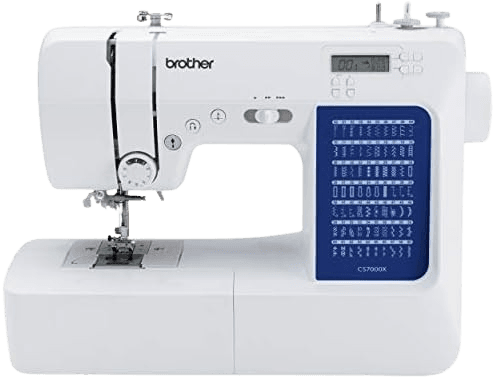

The Brother CS7000X is a feature-rich computerized sewing and quilting machine that caters to a wide range of users, from beginners to more experienced crafters.
Designed for ease of use and packed with convenient features, this model stands out as an excellent choice for anyone looking to dive into sewing or enhance their quilting projects.
| Machine Dimensions (W x D x H) | 12.2″ x 6.6″ x 16.2″ / 30.9 cm x 16.7 cm x 41.1 cm |
| Machine Weight | 10.5 lbs / 4.7 kg |
| Box Size (W x D x H) | 11.8″ x 19.8″ x 17.2″ / 29.9 cm x 50.2 cm x 43.6 cm |
| Box Weight | 19.8 lbs / 8.9kg |
| 10 Sewing & Quilting Feet | Zigzag, Overcasting, Buttonhole, Blind Stitch, Monogramming & etc. |
| Display Type | LCD |
| Speed Control | Yes |
| Machine Cover Included | Yes |
| Maximum Sewing Speed (Stitches Per Minute) | 750 |
| Warranty | 25 years, free customer phone and online technical support for the life of the product |
Key Features:
- 70 Built-In Stitches: The model boasts an impressive variety of 70 utility, decorative, heirloom, and quilting stitches. It includes seven styles of one-step, auto-size buttonholes, offering endless possibilities for creativity in your sewing projects.
- Automatic Needle Threader: This upgraded feature makes threading the needle a breeze. Simply touch a lever, and the machine automatically threads the needle, saving you time – especially helpful for those late-night sewing sessions.
- Quick-Set Drop-In Bobbin: The jam-resistant top bobbin system is easy to load and helps prevent thread jams, ensuring smooth sewing. The design allows you to see how much thread is left, so you won’t get caught off guard.
- Speed Control: The adjustable sewing speed control lets you sew at your own pace, which is ideal for beginners still mastering their techniques or for those who are working on complicated projects.
- Included Accessories: The machine comes with some sewing and quilting accessories, including 10 presser feet (such as a walking foot, zipper foot, and buttonhole foot), a quilt guide, and a hard protective cover for portability. You’ll have everything you need to get started right out of the box.
Pros:
- Wide Table for Quilting: Included with the machine is a detachable wide table, perfect for handling large projects comfortably. This extra space allows you to handle bigger pieces of fabric with ease, giving you better control.
- User-Friendly Interface: The LCD provides setup and operation to stitch selection and settings, while easy-to-follow threading diagrams guide you through setup. A bilingual user manual (in English and Spanish) is also included.
- Free Motion Capability: The drop-feed mechanism allows for free-motion sewing and quilting, making it a versatile tool for those looking to explore creative techniques.
- Durable Metal Frame: The sturdy metal frame construction ensures stability and durability, allowing the machine to handle various projects without skipping stitches.
Cons:
- No Adjustable Presser Foot Pressure: Some users may prefer the ability to adjust presser foot pressure for different fabric types.
- Limited Advanced Features: More experienced sewers might find the machine lacking in some advanced functions found in higher-end models.
- No Built-In Quilting Stitches: While it does have quilting options, it doesn’t have specialized built-in quilting stitches.
2. SINGER Heavy Duty 4411 Sewing Machine


The SINGER Heavy Duty 4411 is a strong sewing machine made for working with tough fabrics like denim, canvas, and leather.
Its sturdy build and helpful features make it perfect for both beginners and experienced sewers who need a dependable machine for different projects.
| Machine Dimensions (W x D x H) | 15.5″ x 6.2″ x 12″ / 39.3 cm x 15.8 cm x 99.8 cm |
| Weight | 14 lbs / 6 kg |
| Box Size (W x D x H) | 17.5″ x 8.5″ x 13.5″ / 44.4 cm x 21.5 cm x 34.2 cm |
| Hertz | 60 |
| Watts | 84 |
| Volts | 120 |
| Machine Cover Included | Yes |
| Maximum Sewing Speed (Stitches Per Minute) | 1,100 |
| Warranty | 2 years |
Key Features:
- Powerful Motor: With 50% more power than standard sewing machines, the model is built to handle heavy-duty fabrics. The robust motor ensures consistent, professional-grade stitching, making it perfect for everything from everyday repairs to ambitious crafting projects.
- Versatile Stitch Applications: The machine offers 69 stitch applications, allowing you to explore a wide range of sewing techniques. From basic seams to intricate decorative stitches, the SINGER 4411 is well-equipped for home decor projects, fashion garments, and more.
- Top Drop-In Bobbin System: The transparent cover on the top drop-in bobbin system allows you to monitor your thread supply easily. This feature prevents running out of thread mid-seam, enhancing your overall sewing experience.
- High-Speed Stitching: Achieve up to 1,100 stitches per minute, enabling you to complete projects quickly and efficiently. This feature makes it an excellent choice for those who value speed without sacrificing quality.
Pros:
- User-Friendly Setup: Equipped with quick-threading guides and a simple stitch selection dial, the model is intuitive to use. Whether you’re a novice or an experienced sewist, you’ll appreciate the ease of setup and operation.
- Durable Construction: The heavy-duty metal frame ensures stability and prevents skipped stitches, even when working with thicker materials. Its full metal interior construction guarantees longevity and durability.
- LED Lighting: An LED light illuminates your sewing area, allowing you to work with precision, even in low-light conditions.
- Complete Kit: Comes with a variety of essential accessories, allowing for a great start on any sewing project.
Cons:
- Limited Advanced Features: While great for basic to intermediate projects, it may lack some features that more advanced sewists might seek.
- Weight: At 14 lbs, it may be less portable than lighter machines, making it a bit cumbersome for transporting to classes or workshops.
- Basic Buttonhole Function: The four-step buttonhole process may be less convenient than automatic options found on more advanced models.
3. Brother XM2701 Sewing Machine
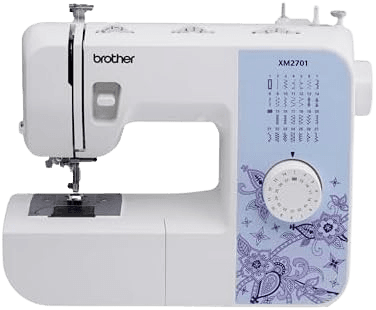

The Brother XM2701 is a lightweight, versatile sewing machine designed for users of all skill levels, from beginners to advanced sewists.
It offers a fantastic balance of ease of use and a range of features, making it ideal for everyday sewing projects.
| Machine Dimensions (W x D x H) | 15.3″ x 5.9″ x 12.1″ / 38.8 cm x 14.9 cm x 30.7 cm |
| Weight | 12.6 lbs / 5.7 kg |
| Box Size (W x D x H) | 17.3″ x 7.6″ x 14.2″ / 43.9 cm x 19.3 cm x 36 cm |
| Box Weight | 15.8 lbs / 7.1 kg |
| Display Type | None |
| Lighting Type | LED |
| Speed Control | No |
| Machine Cover Included | No |
| Included Accessory Feet | Button Sewing Foot, Narrow Hemmer Foot, Zipper Foot, etc. |
| Maximum Sewing Speed (Stitches Per Minute) | 800 |
Key Features:
- 27 Built-in Stitches: This machine includes 27 unique built-in stitches, ranging from decorative and zigzag stitches to stretch stitches, and an auto-size buttonhole. With 63 stitch functions, you can easily find the right stitch for any project.
- Automatic Needle Threader: The XM2701 features an automatic needle threading system, allowing you to effortlessly thread the needle with a simple touch, saving you time and frustration.
- Drop-In Top Bobbin: Quick-Set drop-in bobbin simplifies the loading and monitoring of your thread supply. The transparent cover lets you keep an eye on your thread level, preventing interruptions during sewing.
- Included Accessories: It comes with 6 sewing feet (buttonhole, zipper, zigzag, narrow hemmer, blind stitch, and button sewing feet), a 3-piece needle set, a twin needle, and four bobbins. An instructional DVD and a user manual in English and Spanish are also included for easy reference.
Pros:
- Lightweight and Portable: Weighing just 12.6 lbs, it’s easy to transport, making it ideal for classes or travel.
- Lifetime Support: Lifetime technical support, accessible through online chat, phone, or live chat, ensuring you have assistance whenever you need it.
- LED Lighting: The brightly lit work area enhances visibility, allowing you to sew with precision, especially in low-light conditions.
- Versatile Free Arm: This free-arm sewing machine is perfect for a wide range of sewing tasks, from basic alterations to more complex designs.
- Included Accessories: This kit comes with essential accessories so you can start sewing right away without needing to make additional purchases.
Cons:
- Limited Advanced Features: While great for beginners, advanced sewists might find the features basic compared to higher-end models.
- Manual Tension Adjustment: It lacks an automatic thread tension feature, which may require more adjustments for some fabrics.
- No Speed Control: The absence of speed control may make it challenging for beginners to manage their sewing speed on more complex projects.
4. Brother GX37 Sewing Machine
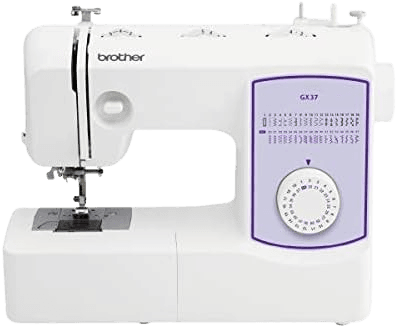

With 37 built-in stitches, this machine is well-equipped to handle a variety of sewing tasks, from basic mending to intricate garment construction.
Its compact design and lightweight construction make it a great option for home sewing or on-the-go projects.
| Machine Dimensions (W x D x H) | 12.4″ x 7″ x 16.2″ / 31.4 cm x 17.7 cm x 41.1 cm |
| Weight | 10.1 lbs / 4.5 kg |
| Box Size (W x D x H) | 14.2″ x 7.5″ x 17.5″ / 36 cm x 19 cm x 44.4 cm |
| Box Weight | 15.6 lbs / 7.07 kg |
| Display Type | LCD |
| Lighting Type | LED |
| Speed Control | No |
| Machine Cover Included | Yes |
| Included Accessory Feet | Buttonhole Foot, Narrow Hemmer Foot, Zipper Foot, Blindstitch Foot, etc. |
| Maximum Sewing Speed (Stitches Per Minute) | 850 |
Key Features:
- 37 Unique Built-in Stitches: This includes 37 built-in utility and decorative stitches, as well as an auto-size buttonhole. This extensive selection allows you to explore various sewing techniques, perfect for everything from basic sewing to more decorative projects.
- Automatic Needle Threader: This machine simplifies the threading process with its automatic needle threading system, allowing you to thread the needle effortlessly, saving you time.
- Drop-In Top Bobbin: The jam-resistant feature makes loading and monitoring your thread easy. Its clear cover allows you to see your thread supply, ensuring you won’t run out mid-project.
- Versatile Free Arm: The free arm sewing capability is ideal for sewing cuffs, sleeves, and other difficult-to-reach areas, making it versatile for a variety of projects.
Pros:
- Compact and Lightweight: Its lightweight design makes it portable and perfect for sewing.
- Bright LED Lighting: The brightly lit work area enhances visibility, making it easier to see your fabric and stitches clearly, even in low-light conditions.
- Lifetime Support: Offers free technical support, providing peace of mind for users.
- Comprehensive Accessories: These come with essential sewing feet and tools, so you can start your projects without additional purchases.
Cons:
- Basic Advanced Features: While suitable for most tasks, advanced sewists might find the machine lacks some high-end features.
- No Speed Control: It lacks adjustable speed control, which might be challenging for beginners on more complex projects.
- Limited Customization: This does not include features like a speed control button.
5. SINGER M1000 Lightweight & Portable Sewing Machine
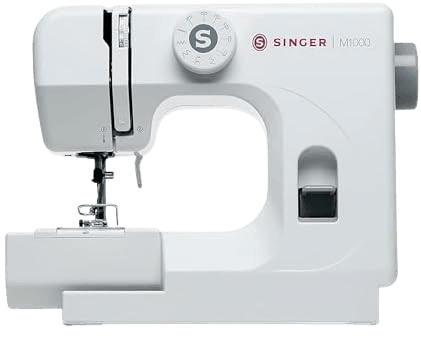

The SINGER M1000 is a compact and versatile sewing machine designed for mending and light sewing tasks. Weighing just 5.5 pounds, this lightweight model is ideal for sewists on the go, making it easy to store and transport.
With 32 stitch applications, this machine covers a wide range of essential sewing techniques, making it a practical choice for both beginners and those who need a reliable mending machine.
| Machine Dimensions (D x W x H) | 11.4″ x 5.1″ x 9.4″ / 28.9 cm x 12.9 cm x 23.8 cm |
| Weight | 5.5 lbs / 2.5 kg |
| 4 Built-InStitches | Straight, Zigzag, Multi-step zigzag, and Blind Hem |
| Sewing Space | 4.25″ / 10.7 cm (needle to tower) |
| Warranty | 1 year |
Key Features:
- 32 Stitch Applications: The SINGER M1000 includes essential stitches such as straight stitch, zigzag options, multi-stitch zigzag, and blind hem. These applications are perfect for fixing lightweight to medium-weight fabrics and creating durable hems.
- Top Drop-In Bobbin: This machine features a transparent bobbin and cover, allowing you to easily monitor your thread supply and ensuring you won’t run out of thread mid-seam.
- Easy Stitch Selection: The stitch selector dial simplifies your sewing process – just turn the dial to the stitch you want, and you’re ready to go.
Pros:
- Safety Features: The finger guard safety feature helps keep fingers safely away from the needle, providing added protection while sewing.
- Quick and Easy Threading: This model comes with easy-to-follow threading guides, helping you get started sewing faster.
- Reverse Lever: This function allows you to sew stitches in reverse, making it easy to secure seams at the beginning and end to prevent unraveling.
- Adjustable Thread Tension: Fine-tune your stitches according to the fabric and thread used, ensuring balanced and neat seams.
- Free Arm Capability: The free arm design makes it easy to sew cuffs, hems, and other tubular projects, enhancing versatility.
- Versatile for Basic Sewing Needs: The variety of stitch applications allows for a range of mending and light sewing tasks.
Cons:
- Limited to Basic Functions: It is not suitable for heavy-duty sewing tasks or more advanced techniques.
- Throat Space: The sewing space is limited, which may be a drawback for larger projects.
- Not Ideal for Thick Fabrics: While it can handle lightweight to medium fabrics, it may struggle with heavier materials.
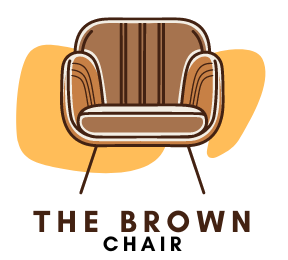
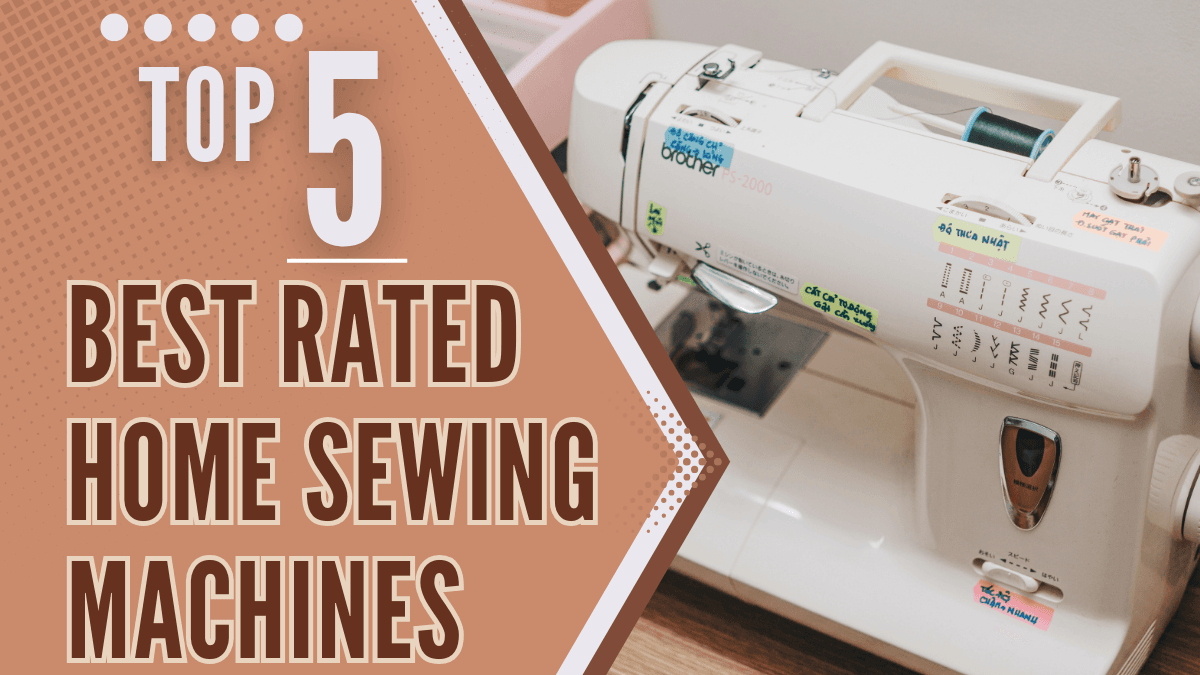
 ChatGPT
ChatGPT
 Perplexity
Perplexity
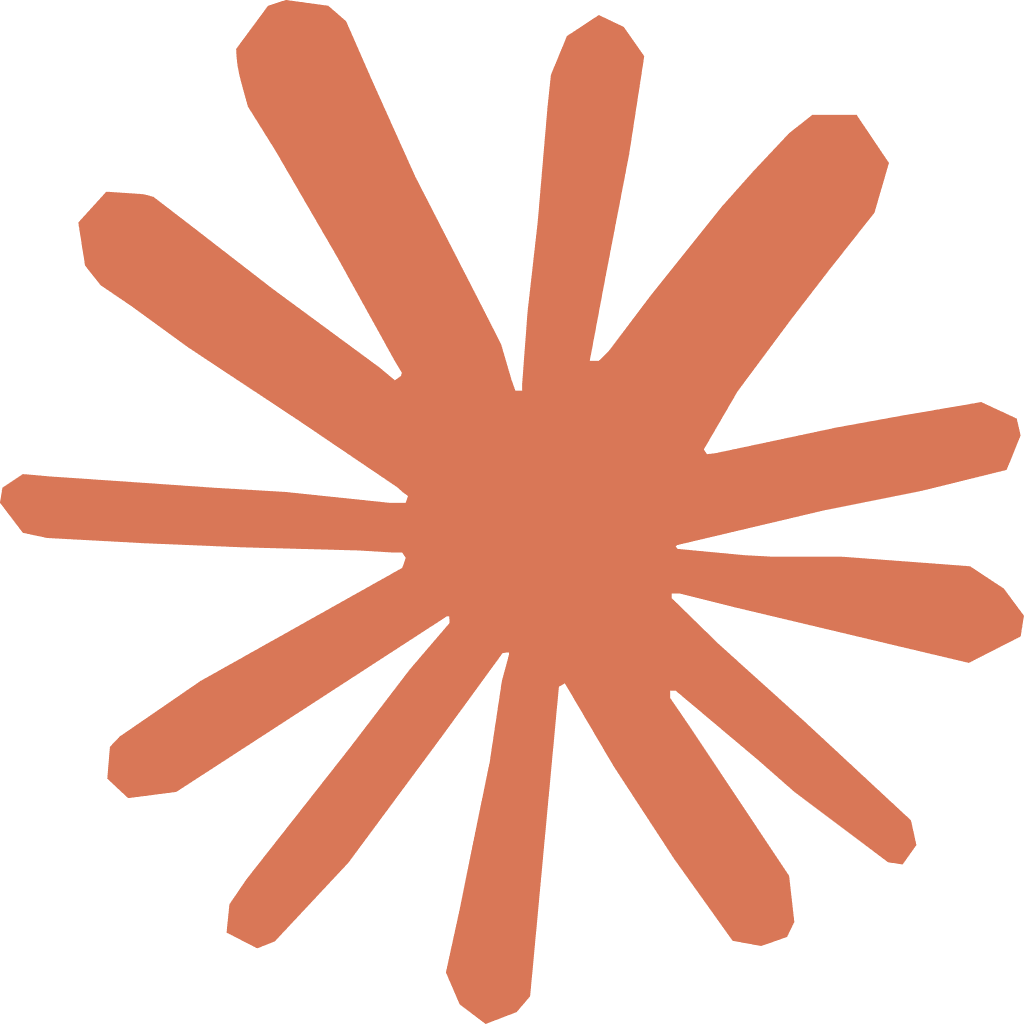 Claude
Claude
Leave a Reply